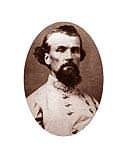If every artillery shell weighed 10 pounds and it had to be horse-drawn in caissons or in auxiliary wagons for supplementary ammunition, the logistical problems must've been staggering. Every horse drawing a wagon full of ammunition, kit foodstuffs and all of the necessary accoutrements of an army must be fed and most of the feed for all that large number of horses had to be carted along because the horses would soon exhaust any vegetation within range.
So more horses have to be used to feed the ones bringing the artillery shells and some horses had to be use to feed the ones bringing the feed, and so on.
I have no idea the quantity of artillery used at Gettysburg, for example, but we know that Pickett's charge ran into a devastating artillery barrage. How many shells at 10 pounds each were expended? How many horses were needed?
The logistical problems posed practical problems for the generals. For example, in an almost heartbreaking message Gen. Longstreet whose orders were to suppress the Yankee artillery, sent a urgent message saying, "for God sake" go now because I'm running out of ammunition. The consequences of running out of ammunition contributed to the fact that two out of three who went up in Pickett's charge did not come back.
We know the German soldiers in Russia in the latter part of the war there were often reduced to horsepower, the so-called Russian ponies, for want of petrol or just for want of machines. Those units that were not mechanized Panzer units were horse-drawn for the most part.
